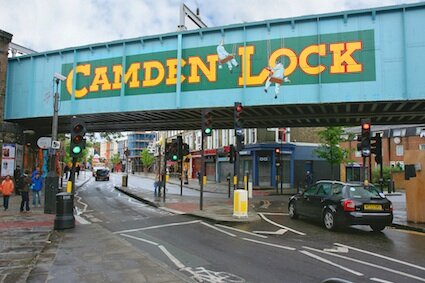26 July 2012

It’s the penultimate day of the Torch Relay route and over the last 68 days we have followed the Torch from its starting point in Cornwall , in the West, through Wales and Scotland, across to Northern Ireland, then from Scotland down to the East and South of England. For the past few days we have followed the Torch as it winds its way through Greater London. Today, we are in the heart of the City and all eyes will be turned towards the Olympic Flame as it nears the Olympic Stadium!
As the day goes on the Torch will reach the City of London. Look out for the Museum of London as the torch passes nearby. The museum’s displays document the history of London from the prehistoric to the present day. Currently on display until September is London and the Olympics, a display which reflects on the local and global perspectives from the London games in 1908 and 1948.
Whilst in the City, the Torch will race past one of London’s most iconic structures. St Paul’s Cathedral was built between 1675 and 1710 by Sir Christopher Wren after the previous church on this site was destroyed in the Great Fire of London. The cathedral dominates the London skyline and has been the centre for all the important religious services in the capital, from funerals (such as Admiral Lord Nelson’s) and weddings to the Jubilee celebrations of Queen Victoria in 1896 and our present Queen Elizabeth II in June this year.
The Olympic Flame will continue on through the City of London across the Thames towards Southwark. Along this stretch of the Torch Relay route, you will be able to see the fabulous architecture that dominates this area of London, from the Monument and the Tower of London to the Gherkin and City Hall. At Southwark, the Olympic flame will pass near to the rebuilt Shakespeare’s Globe. The World Shakespeare Festival is one of many London 2012 Festivals taking place across the capital, so why not celebrate the bard’s work at the theatre synonymous with the master playwright and his work? Performances this summer include The Taming of the Shrew, Richard III and Henry V and start from the affordable price of £5. Next to The Globe is another instantly recognizable cultural structure, Tate Modern. Based in the former Bankside Power Station, Tate Modern is one of the most visited modern art institutions in the world. Currently on display is an exhibition featuring the work of influential artist Damien Hirst, which includes the iconic sculptures from his Natural History series.
From this point the Torch will head through south London, past Bermondsey, Peckham and Brixton and passing the famous Battersea Power Station before reaching the Royal Borough of Kensington and Chelsea. One of the wealthiest boroughs in London, Kensington and Chelsea is home to its own culture district known as ‘Albertopolis’. In this district you can visit one of a number of museums, from the Natural History Museum (highlights include the Dinosaur and Mammals galleries), the Victoria and Albert Museum (a museum dedicated to art and design) and the Science Museum (featuring famous artefacts from science and industry, from Stephenson’s Rocket to the Apollo 11 command module).
Music is also important to this cultural heart of London. Just opposite the Royal College of Music on one side and the Kensington Gardens on the other is the Royal Albert Hall. The Royal Albert Hall was built in line with Prince Albert’s vision for a site dedicated to the promotion of Art and Science. Over the years, many leading musicians have performed at the venue, including Frank Sinatra and the Beatles. Don’t miss out on the world-famous Proms at this stunning venue, standing tickets in the areana can be bought hours before the concert at which point you can relax and enjoy a range of classical music performed by leading orchestras and performers from around the world. Even if you only have a few hours to spare in this area, why not try the Walk the World Albertopolis (produced by Discovering Places and the Royal Geographical Society with IBG) walk which will take you past all of these stunning landmarks including the Albert Memorial next to the Albert Hall.
By the evening, the Torch will head out of Kensington and Chelsea passing through Holland Park before doubling back into Westminster, a borough that is home to both monarchy and government. A trip to Westminster would not be complete without admiring the beautiful architecture of Buckingham Palace, Westminster Abbey and the . You can even visit ‘Number One London’ the popular name for Apsley House, former home to the Duke of Wellington. If you are staying in Hyde Park for the evening celebration, take a look at Speaker’s Corner (an area dedicated to open air public debate) or relax by the oval fountain situated next to Serpentine Lake, or visit the Princess Diana Memorial, which commemorates the life and legacy of the late Princess of Wales.
We hope you enjoyed our whistle-stop tour of London. We’ll be back tomorrow for our last Torch Relay blog post as we follow the Torch to its final destination, the Olympic Stadium!
Post by Katy, Discovering Places Team
Enter your email address below to join our mailing list: